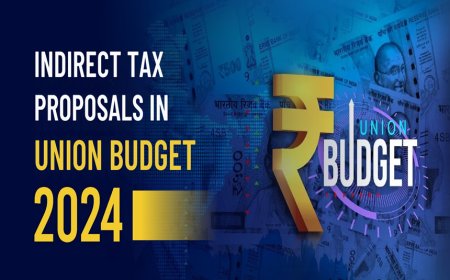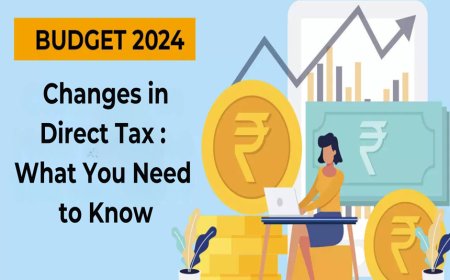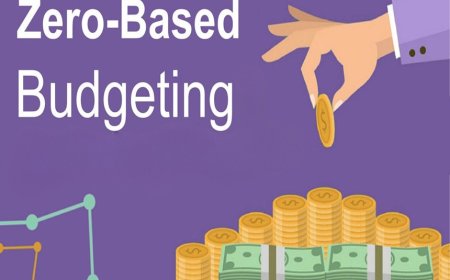Option Pricing Models: Beyond Black-Scholes – A Guide for Indian Investors
Explore the world of option pricing models! This comprehensive guide goes beyond Black-Scholes, explaining binomial models, Monte Carlo simulations, and volatility smiles/skews. Learn how these tools empower Indian investors in the options market.

Options are like having a secret weapon in your investing arsenal. They offer the flexibility to profit from market movements, protect your portfolio, or even generate income. But to truly harness their power, you need to understand the foundation of how options are priced.
The Black-Scholes Model: The Cornerstone of Option Pricing
The Black-Scholes model, developed in the 1970s by Fischer Black and Myron Scholes (and later contributions by Robert Merton), revolutionized option pricing. It's a mathematical formula used to calculate the theoretical value of European-style options (options that can only be exercised at expiration).
The Black-Scholes Formula:
While the full mathematical representation can be complex, the core idea is that the value of a call option (C) or a put option (P) is determined by:
- C (or P) = Function of (S, X, T, r, σ)
Where:
- S: Current price of the underlying asset (stock, index, etc.)
- X: Strike price of the option (the price at which you can buy or sell the asset)
- T: Time to expiration of the option
- r: Risk-free interest rate
- σ: Volatility of the underlying asset's price
Breaking Down the Formula:
-
Current Asset Price (S): The higher the current price of the asset, the more valuable a call option becomes (as you have the right to buy it at a potentially lower strike price). Conversely, a higher asset price makes a put option less valuable.
-
Strike Price (X): A call option is more valuable when the strike price is lower (as you can buy the asset at a cheaper price). The opposite is true for put options.
-
Time to Expiration (T): The longer the time until expiration, the more time the underlying asset has to move in a favorable direction, increasing the option's value.
-
Risk-Free Interest Rate (r): A higher risk-free rate generally increases the value of call options (as it represents the opportunity cost of not owning the underlying asset) and decreases the value of put options.
-
Volatility (σ): Higher volatility increases the value of both call and put options. This is because greater price swings increase the probability of the option ending up "in the money" (profitable).
Assumptions of the Black-Scholes Model
The Black-Scholes model, while revolutionary, relies on several key assumptions to simplify the complex world of option pricing. These assumptions are:
1. Efficient Markets:
- Explanation: This assumption states that financial markets are efficient, meaning all available information is already reflected in the prices of assets. In an efficient market, it's impossible to consistently "beat the market" because prices immediately adjust to new information.
- Implication: This assumption allows the model to use the current market price of the underlying asset as the best estimate of its future value.
- Reality Check: While markets strive for efficiency, they are not perfectly efficient. Information asymmetries, emotional trading, and other factors can lead to temporary mispricings.
2. No Dividends:
- Explanation: The Black-Scholes model assumes that the underlying asset (stock, index, etc.) does not pay any dividends during the life of the option.
- Implication: Dividends can affect option prices, especially for American-style options (which can be exercised early).
- Reality Check: Many stocks pay dividends, which can introduce complexity into option pricing.
3. Constant Volatility:
- Explanation: The model assumes that the volatility (the degree of price fluctuation) of the underlying asset remains constant throughout the life of the option.
- Implication: This simplifies the calculation of the option's theoretical value.
- Reality Check: Volatility often changes over time due to market events, economic news, and other factors.
4. Lognormal Distribution:
- Explanation: The Black-Scholes model assumes that the returns of the underlying asset follow a lognormal distribution. This means that the natural logarithm of the asset's price changes is normally distributed.
- Implication: This assumption allows for easier mathematical calculations and is based on the idea that asset prices cannot be negative.
- Reality Check: While lognormal distribution is a reasonable approximation in many cases, asset returns can exhibit fat tails or other deviations from normality.
5. No Transaction Costs or Taxes:
- Explanation: The model assumes there are no transaction costs (brokerage fees, commissions, etc.) or taxes associated with trading the option or the underlying asset.
- Implication: This simplification makes the model easier to use but can lead to slightly inaccurate pricing in real-world scenarios.
- Reality Check: Transaction costs and taxes can significantly impact the profitability of options trading.
Limitations of the Black-Scholes Model
Despite its widespread use and significant contributions to option pricing, the Black-Scholes model is not without its flaws. Here's a closer look at its key limitations:
1. European-Style Options Only:
- Explanation: The Black-Scholes model is designed to price European-style options, which can only be exercised at expiration. It does not accurately price American-style options, which can be exercised at any time before expiration.
- Implication: This limitation restricts the model's applicability in markets where American-style options are prevalent. In India, for example, both European and American-style options are traded, making it important to consider alternative models for American options.
- Why it Matters: The early exercise feature of American options adds complexity to their valuation as it introduces the possibility of optimal early exercise.
2. Unrealistic Assumptions:
- Constant Volatility: As mentioned earlier, the Black-Scholes model assumes that the volatility of the underlying asset remains constant throughout the life of the option. However, volatility often fluctuates in real markets due to various factors like economic news, company earnings, and geopolitical events. This can lead to significant deviations between the model's predicted prices and actual market prices.
- Lognormal Distribution: The assumption of lognormal distribution for asset returns is a simplification. In reality, asset returns can exhibit fat tails (extreme events occurring more frequently than predicted by the normal distribution) or other deviations from normality. This can lead to underestimation of the probability of large price movements.
3. Ignoring Dividends:
- Explanation: The Black-Scholes model doesn't account for dividends paid out by the underlying asset. This is a significant drawback, especially for stocks that pay regular dividends. Dividends can affect the price of the underlying asset and, consequently, the value of the option.
- Implication: Ignoring dividends can lead to mispricing of options, especially those with longer maturities. For instance, a call option on a dividend-paying stock might be undervalued by the Black-Scholes model because it doesn't consider the potential decrease in the stock price after the dividend payment.
Additional Limitations:
- Transaction Costs: The Black-Scholes model ignores transaction costs (brokerage fees, commissions, etc.) associated with trading the option or the underlying asset. These costs can affect the profitability of options trading strategies.
- Liquidity Risk: The model assumes perfect liquidity, meaning that you can always buy or sell the option or the underlying asset at the prevailing market price. In reality, markets can experience illiquidity, especially during times of high volatility or for less actively traded options.
- Risk-Free Rate: The model assumes a constant risk-free interest rate, which may not hold true in practice. Interest rates can fluctuate due to changes in monetary policy, economic conditions, and other factors.
Understanding these limitations is crucial for Indian option traders. While the Black-Scholes model is a valuable tool, it's important to be aware of its shortcomings and consider alternative models (like the binomial model) when appropriate. Additionally, incorporating factors like dividends, transaction costs, and changing volatility into your analysis can help you make more accurate pricing decisions and develop more robust trading strategies.
Beyond Black-Scholes: Advanced Option Pricing Models
To address the limitations of Black-Scholes, various advanced models have been developed:
1. Binomial Option Pricing Model (BOPM): A Flexible Framework for Options Valuation
The Binomial Option Pricing Model (BOPM) is a versatile tool for valuing options, particularly American-style options (which can be exercised before expiration) and options on assets that pay dividends.
Key Features of the Binomial Option Pricing Model
1. Discrete Time Periods:
- Explanation: The BOPM divides the time until expiration of the option into a series of discrete time periods (e.g., days, weeks, or months).
- Implication: This approach allows the model to capture the evolution of the underlying asset's price over time and the option holder's ability to exercise the option early.
2. Binomial Tree:
- Explanation: At each time step, the model assumes that the price of the underlying asset can move either up or down by a certain percentage. This creates a tree-like structure (hence the name "binomial") where each node represents a possible price of the underlying asset at a specific point in time.
- Implication: This tree-like structure allows the model to account for multiple possible future price paths for the underlying asset, making it more realistic than the constant volatility assumption of the Black-Scholes model.
3. Backward Induction:
- Explanation: The BOPM calculates the option value at expiration (the final nodes of the binomial tree) and then works backward, step by step, to determine the option value at the present time (the initial node).
- Implication: This backward induction process incorporates the early exercise feature of American-style options, making it possible to determine the optimal exercise strategy at each time step.
4. Risk-Neutral Valuation:
- Explanation: The BOPM, like other option pricing models, uses a risk-neutral valuation approach. This means that it assumes investors are risk-neutral, meaning they do not require additional compensation for taking on risk.
- Implication: This assumption simplifies the calculation of probabilities and allows the model to use the risk-free interest rate to discount future option payoffs.
Advantages of the Binomial Option Pricing Model
- Handles American-Style Options: The BOPM can accurately price American-style options, which the Black-Scholes model cannot do.
- Incorporates Dividends: The BOPM can easily incorporate dividend payments into the valuation process.
- Flexible: The model can be adapted to different assumptions about the underlying asset's price distribution, volatility, and other factors.
- Intuitive: The tree-like structure of the BOPM makes it relatively easy to understand and implement.
Limitations of the Binomial Option Pricing Model
- Computational Intensity: As the number of time periods increases, the calculations involved in the BOPM can become quite complex.
- Simplifying Assumptions: The model still relies on certain simplifying assumptions, such as the risk-neutral valuation and the discrete nature of the time steps.
The BOPM is particularly useful for Indian option traders who deal with American-style options or options on dividend-paying stocks. It provides a more flexible and realistic approach to option pricing compared to the Black-Scholes model.
2. Monte Carlo Simulation (MCS) for Option Pricing: Embracing Uncertainty
The Monte Carlo Simulation (MCS) is a powerful computational technique widely used in finance, including option pricing. Unlike the Black-Scholes model and the Binomial Option Pricing Model, which rely on certain assumptions about the underlying asset's price movements, MCS embraces uncertainty and randomness.
Key Features of Monte Carlo Simulation
1. Random Sampling:
- Explanation: MCS generates a large number of random price paths for the underlying asset. These paths are based on the asset's expected return, volatility, and other relevant parameters.
- Implication: By simulating numerous paths, MCS captures a wide range of possible future scenarios, providing a more comprehensive picture of potential outcomes than models that assume a single price path.
2. Risk-Neutral Valuation:
- Explanation: Like other option pricing models, MCS employs a risk-neutral valuation approach. This means it assumes investors are indifferent to risk and do not require additional compensation for taking it on.
- Implication: The risk-neutral assumption allows the model to discount future option payoffs using the risk-free interest rate.
3. Option Payoff Calculation:
- Explanation: For each simulated price path, MCS calculates the payoff of the option at expiration. The payoff depends on whether the option is a call or put and whether it ends up "in the money" (profitable).
- Implication: By considering payoffs across various scenarios, MCS can account for the potential impact of different market conditions on the option's value.
4. Averaging:
- Explanation: The final step in MCS is to average the option payoffs across all simulated price paths. This average value represents the estimated theoretical price of the option.
- Implication: By averaging over many scenarios, MCS reduces the impact of random fluctuations in individual price paths, providing a more stable and reliable estimate of the option's value.
Advantages of Monte Carlo Simulation
- Flexibility: MCS can handle complex option structures, including options with multiple underlying assets, path-dependent options (whose payoff depends on the path of the underlying asset's price), and options with early exercise features.
- Realism: By simulating a wide range of possible scenarios, MCS provides a more realistic picture of potential outcomes than models that rely on simplifying assumptions.
- Adaptability: MCS can easily incorporate changes in volatility, interest rates, and other parameters, making it well-suited for dynamic markets.
Limitations of Monte Carlo Simulation
- Computational Intensity: MCS can be computationally intensive, requiring significant computing power to generate a large number of price paths and calculate option payoffs.
- Model Risk: The accuracy of MCS depends on the underlying model used to generate the price paths. If the model is flawed, the estimated option prices will also be inaccurate.
- No Closed-Form Solution: Unlike the Black-Scholes model, MCS does not provide a closed-form solution for option prices. This means that the estimated prices are subject to some degree of uncertainty and may vary slightly each time the simulation is run.
MCS is a valuable tool for Indian option traders who deal with complex option strategies or want to assess the potential impact of different market scenarios on their positions. While it requires more computational resources than simpler models, the insights it provides can be invaluable for making informed trading decisions.
3. Beyond Constant Volatility: Understanding Volatility Smile and Skew
The Black-Scholes model assumes that the volatility of the underlying asset remains constant over time. However, market observations reveal that volatility often varies across different strike prices and expiration dates. This phenomenon is represented by the volatility smile and skew models.
Volatility Smile
- What It Is: A volatility smile is a graphical representation of implied volatility (IV) plotted against different strike prices for a given expiration date. The curve often resembles a smile, with higher IV for options that are deep in-the-money (ITM) or out-of-the-money (OTM), and lower IV for at-the-money (ATM) options.
- Explanation: The smile shape suggests that the market is pricing in a higher probability of extreme price movements (either up or down) compared to what the Black-Scholes model would predict. This is often observed in markets with significant uncertainty or potential for large price swings.
Volatility Skew (or Smirk)
- What It Is: A volatility skew (also called a smirk) is a variation of the volatility smile where one side (either the left or right) of the curve is higher than the other.
- Explanation:
- Positive Skew (Smirk): A positive skew indicates higher IV for OTM put options compared to OTM call options. This suggests that the market is pricing in a higher probability of a downside move in the underlying asset.
- Negative Skew (Smirk): A negative skew indicates higher IV for OTM call options compared to OTM put options. This implies that the market is expecting a potential upside move in the underlying asset.
Factors Influencing Volatility Smile and Skew
Several factors can contribute to the shape of the volatility smile and skew:
- Market Sentiment: Fear and greed play a significant role. In a fearful market, investors might be more willing to pay higher premiums for put options (downside protection), leading to a positive skew. In a greedy market, call options (upside potential) might be more in demand, causing a negative skew.
- Supply and Demand: The relative supply and demand for options at different strike prices can also affect IV and contribute to the shape of the smile or skew.
- Market Events: Significant events like earnings announcements, economic data releases, or geopolitical developments can lead to sudden changes in volatility expectations and reshape the volatility smile/skew.
Implications for Indian Option Traders
Understanding volatility smiles and skews is crucial for Indian option traders:
- Pricing: These models provide a more realistic picture of volatility than the Black-Scholes model, leading to more accurate option pricing.
- Trading Strategies: Traders can use volatility skews to develop strategies that capitalize on market expectations of future volatility. For example, a trader might sell OTM put options in a market with a positive skew, betting that the downside move is less likely than the market is pricing in.
- Risk Management: Volatility smiles and skews can help traders assess the risk associated with different option positions. For instance, a steep skew might indicate a higher risk of large price movements in one direction, requiring appropriate risk management measures.
Practical Tips for Navigating the Indian Options Market
1. Master the Greeks:
- Explanation: The Greeks are a set of risk measures that quantify the sensitivity of an option's price to changes in different underlying factors. Understanding the Greeks is crucial for managing your option positions effectively.
- The Main Greeks:
- Delta: Measures the change in the option price for a one-unit change in the underlying asset's price.
- Gamma: Measures the rate of change of delta. It indicates how much the delta will change for a further change in the underlying asset's price.
- Theta: Measures the time decay of the option value. It tells you how much the option price will decrease as time passes, all else being equal.
- Vega: Measures the sensitivity of the option price to changes in volatility.
- Rho: Measures the sensitivity of the option price to changes in interest rates.
- How to Use the Greeks:
- Risk Assessment: The Greeks can help you assess the risk profile of your option positions. For example, a high gamma means your position is more sensitive to changes in the underlying asset's price, making it riskier.
- Position Management: You can use the Greeks to adjust your positions to achieve your desired risk profile. For instance, if you're long a call option and want to reduce your delta exposure, you could sell a call option with a higher strike price.
- Hedging: The Greeks can be used to create hedging strategies. For example, you could buy a put option to hedge against a potential downside move in the underlying asset.
2. Choose the Right Model:
- Explanation: As we've discussed, different option pricing models have their strengths and weaknesses. The choice of model should depend on the specific characteristics of the option you're trading.
- Factors to Consider:
- Option Style: European or American?
- Underlying Asset: Does it pay dividends? Is it highly volatile?
- Market Conditions: Is volatility expected to remain constant or change significantly?
- Matching Model to Situation:
- For European options with no dividends and constant volatility, the Black-Scholes model might be appropriate.
- For American options or options on dividend-paying stocks, consider the Binomial model or Monte Carlo simulation.
- In markets with significant volatility fluctuations, volatility smile and skew models may be more accurate.
3. Utilize Option Pricing Calculators:
- Explanation: Many online platforms and trading software offer option pricing calculators. These tools can save you time and effort by quickly calculating option prices using different models and inputs.
- Benefits:
- Quick and Easy: You don't need to perform complex calculations manually.
- Comparisons: You can easily compare prices calculated using different models to get a better understanding of the fair value of the option.
- Scenario Analysis: Many calculators allow you to change input parameters (like volatility or time to expiration) to see how it affects the option price.
4. Don't Rely Solely on Models:
- Explanation: Option pricing models are just tools. They provide theoretical estimates based on certain assumptions. Real-world markets are often more complex and unpredictable.
- Important Considerations:
- Market Sentiment: Investor sentiment can significantly impact option prices. Positive news or market euphoria can lead to higher implied volatility and inflated option prices.
- News and Events: Unexpected news or events can cause sudden price swings in the underlying asset and affect option prices.
- Your Own Analysis: Don't blindly follow model outputs. Combine your own analysis of market conditions, fundamental factors, and technical indicators to make informed trading decisions.
By mastering these tips, you'll be well on your way to becoming a more informed and successful option trader in the Indian market. Remember, options trading requires a combination of technical knowledge, sound judgment, and risk management skills. Always prioritize understanding the risks involved and use tools and models as aids, not substitutes, for your own analysis.
Conclusion: Empowering Indian Investors in the Options Market
The Indian options market is a dynamic and exciting space, offering opportunities for traders and investors to profit, hedge, and manage risk. Understanding option pricing models is the foundation for navigating this market successfully.
While the Black-Scholes model remains a cornerstone of option pricing, it's crucial to recognize its limitations and embrace the diverse array of models available. Each model offers unique insights and is suited for different situations, from the versatility of the Binomial model for American options to the realism of Monte Carlo simulations for complex scenarios.
For Indian investors, mastering the Greeks, choosing the right model, utilizing calculators, and combining model insights with their own analysis are key to making informed trading decisions. Remember, option pricing models are tools, not crystal balls. They provide valuable guidance, but the ultimate success in the options market lies in your ability to interpret these tools, adapt to changing market conditions, and manage risk effectively.
As the Indian options market continues to evolve, staying informed and continuously learning about different pricing models will be crucial for staying ahead of the curve. By embracing this knowledge and applying it judiciously, you can unlock the full potential of options and achieve your financial goals.
Disclaimer:
The information provided in this article is for educational purposes only and should not be considered financial or investment advice. Options trading involves substantial risk of loss and is not suitable for all investors. The option pricing models discussed here are theoretical tools and may not always reflect real-world market conditions. Before trading options, it is essential to conduct thorough research, understand the risks involved, and consider seeking advice from a qualified financial professional. The author and publisher of this article are not liable for any losses or damages incurred as a result of reliance on the information provided herein.
What's Your Reaction?
































































































































